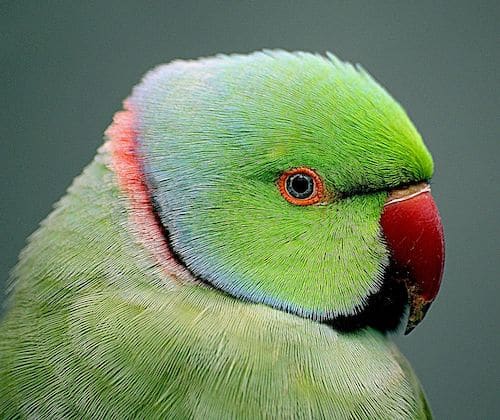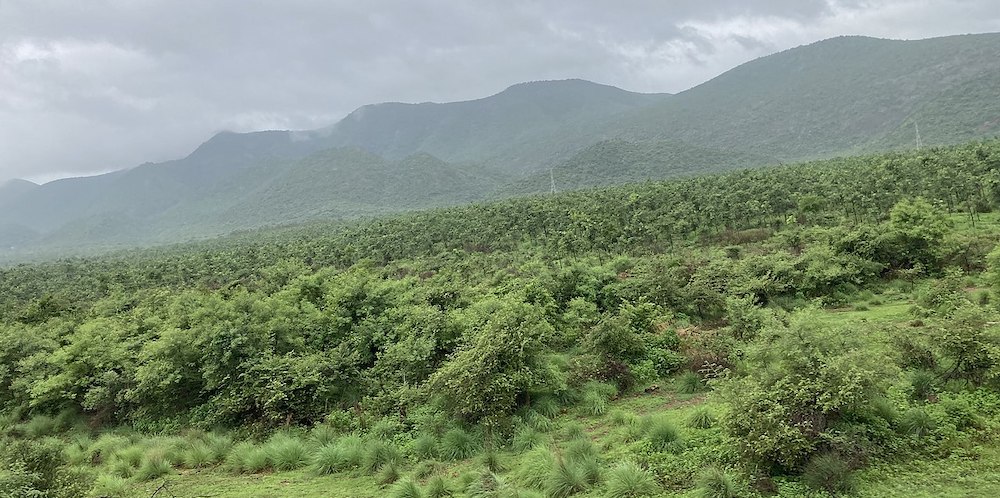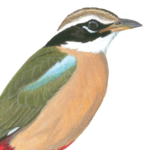Andhra Pradesh

Andhra Pradesh is a state in the southern coastal region of India. It is the seventh-largest state with an area of just under 163,000 km2 (63,000 square miles) and the tenth-most populous state with around 54 million inhabitants. It shares borders with Odisha to the northeast, Chhattisgarh to the north, Telangana to the northwest, Karnataka to the southwest, Tamil Nadu to the south, and the Bay of Bengal to the southeast. It has the second-longest coastline in India at almost 1,000 km (600 miles). After existence as Andhra State and unified Andhra Pradesh, the state took its present form on 2 June 2014, when the new state of Telangana was formed through bifurcation. Amaravati is the capital of the state with less than a million people, wand the largest city is Visakhapatnam with around 2.4 million. Telugu, one of the classical languages of India used by the majority of people, is the first official language.
The Eastern Ghats are a major dividing line separating coastal plains and peneplains. The Ghats are ranges of interrupted hills with patches of moist deciduous forests; individual sections have local names Fertile valleys formed by perennial flow of the rivers Godavari and Krishna break these ranges. The Ghats become more pronounced towards the south and extreme north of the coast. Some of these consist of the Horsley hills, the Seshachala hills, the Nallamala hills, and the Papi hills. Arma Konda, located in Visakhapatnam district, is the highest peak in the Eastern Ghats. Peneplains, part of Rayalaseema, slope towards the east.

The Eastern Ghats – ©Munna Aawara, CC BY-SA 4.0 via Wikimedia Commons
The eastern coastal plains are part of Coastal Andhra. These are mostly delta regions formed by the Krishna, Godavari, and Penna rivers. Peneplains are part of Rayalaseema. 62% of the population is engaged in agriculture and related activities. Rice is the state’s major food crop and staple food. The state contributes 10% of total fish production and over 70% of shrimp production in India. Satish Dhawan Space Centre (SDSC), known as Sriharikota Range (SHAR), at the barrier island of Sriharikota in Tirupati district, is the primary satellite launching station of India. Forests cover just over 18% of the state.
The climate varies considerably, depending on the geographical region. Summers last from March to June. In the coastal plain, the summer temperatures are generally higher than in the rest of the state, with temperatures exceeding 40 °C. The state receives its precipitation mainly from southwest monsoon during July to September and to an extent from northeast monsoon during November & December, winter being November through February. Since the state has a long coastal belt, the winters are not very cold.
Birding Andhra Pradesh
The diversity of fauna includes Tigers, Leopard, Dholes, Blackbuck, Cheetal, Sambar, Sea Turtles and a number of reptiles as well as over 550 birds. The estuaries of the Godavari and Krishna rivers support rich mangrove forests with fishing cats and otters as keystone species. The state has many sanctuaries and national parks, such as Coringa wildlife sanctuary, Nagarjunsagar-Srisailam tiger reserve, Kolleru bird sanctuary, and Nelapattu bird sanctuary.

Kolleru Bird Sanctuary – ©J.M.Garg, CC BY-SA 4.0 via Wikimedia Commons
Neem Azadirachta indica is the state tree, jasmine is the state flower, blackbuck is the state mammal and Ring-necked Parakeet is the state bird.
The region is rich from ornithological point of view too. There are bird species representing 58 families and the last compilation of checklists for the state puts the taxa number at 512. There are numerous wild bird sanctuaries.
A survey conducted by ATREE in the northern Eastern Ghats hill region identified more than 205 species of birds, including relatively rare ones like Brook’s Flycatcher Cyornis poliogenys and Jerdon’s Baza Aviceda jerdoni. Threatened bird species like the Malabar Pied Hornbill Anthracoceros coronatus were also spotted in a couple of habitats. Other bird species found in the Eastern Ghats include Great Indian Bustard Ardeotis nigriceps, Red-wattled Lapwing Vanellus indicus, Spot-billed Pelican Pelecanus philippensis, Blue Peafowl Pavo cristatus, Indian Pond Heron Ardeola grayii, Hoopoe Upupa epops, Spotted Owlet Athene brama, Greater Coucal Centropus sinensis, Pied-crested Cuckoo Clamator jacobinus, Oriental White Ibis Threskiornis melanocephalus, Indian Pitta Pitta brachyura, Indian Paradise Flycatcher Terpsiphone paradisi, Red-vented Bulbul Pycnonotus cafer, Red-whiskered Bulbul Pycnonotus jocosus, Jungle Babbler Turdoides striata, Painted Stork Mycteria leucocephala, Black-rumped Flameback Dinopium benghalense, Brahminy Kite Haliastur indus, Jungle Myna Acridotheres fuscus, Indian Spotted Eagle Aquila hastata, Indian Vulture Gyps indicus and Malabar Whistling Thrush Myophonus horsfieldii.
Details of the individual sites below borrow heavily from the brochures of the BSAP and the Andhra Pradesh Tourism Development Corporation.
-
Coringa Mangrove Sanctuary
InformationSatellite ViewOne of the best pieces of coastal mangrove ecosystem. -
East Godavari district
InformationSatellite ViewKakinada, the port town is located approximately 525km away from Hyderabad. Rajahmundry, the district headquarters is about 370km from Hyderabad. Better known as the 'rice bowl' of the state leaves the visitor with an enchanting experience of the rice fields and the coconut lined canals known as the 'konaseema', much celebrated in Telugu literature. Papikonda Wildlife Sanctuary: 50km upstream Rajahmundry Quintessentially 'Telugu' in it's façade is also much written and admired location in literary works. Nestled in fertile Godavari basin is one of the finest representative forests of the eastern ghats known for the big cats like Tiger, Leopard and the large herbivores is also a treasure trove of the birds. Chittoor district: Tirupati, one of the most important and well-connected towns is approximately at a distance of 600km from Hyderabad. The southernmost district is virtually covered with the Eastern Ghats and it's extended hill systems. The famous being the 'seven hills' of Tirumala for religious and bio-diversity and the Horsley Hills for the aesthetic reasons. Sri Venkateswara Sanctuary: Around the town of Tirupati. Undisturbed and protected forests on the hills harbour a wide variety of wildlife. The notable being the highly endangered Slender Loris. The hills are also home to a good number of bird species. The Talakona waterfalls,a little distance away from the temple town is an ideal birding area. -
ICRISAT campus – Medak
Satellite ViewMedak district, 25km west of the Hyderabad city centre. This is a veritable paradise for the birdwatcher! The campus has representative habitats of many eco-systems. A normal birding day in winter (Jan-Feb) usually yields close to hundred species. -
Kolleru Lake Sanctuary - East Godavari
InformationSatellite ViewEast Godavari district - approximately 450km from Hyderabad. A large fresh water lake with inhabited islands is traditionally known for waterfowl. Spot-billed Pelican Pelecanus philippensis is one of the star attractions. -
Nelapattu Sanctuary - Nellore
InformationSatellite ViewNellore district - freshwater lake known for it's heronry. -
Pulicat Sanctuary - Nellore
InformationSatellite ViewNellore district - approximately 600km from Hyderabad. A large inland brackish water lake known for its Flamingos and winter visitors from the northern hemisphere. -
Rishi Valley Bird Preserve - Chittoor
InformationSatellite ViewChittoor district, approximately 500km from Hyderabad. Nestled in serene, green hills, this bird preserve is the labour of numerous school children and one visionary's driving force. Birding with a good amount of spiritualism, as it's the abode of one of the greatest spiritual teachers and thinkers of the modern times Sri Jiddu Krishnamurthy. -
Rollapadu Great Indian Bustard Sanctuary - Kurnool
InformationSatellite ViewKurnool district - approximately 270km from Hyderabad, is known for the Great Indian Bustard Choreotis nigriceps one of the highly endangered birds of the world. Other grassland species can also be sighted. -
Sri Lankamalleswara Sanctuary - Cuddapah
InformationSatellite ViewCuddapah district - approximately 500km from Hyderabad is known universally for the highly endangered Jerdon's Courser Rhinoptilos bitorquatus,which was once believed to be extinct. -
Srikakulam District
Satellite ViewApproximately 750km from Hyderabad. Mahendra Hills: 90km from Srikakulam town. The highest peak in the Eastern Ghats lies in these hills.Picturesque hills offer a good birding experience. Telineelapuram & Telukunchi: 65km & 115km from Srikakulam town respectively. The heronries are well known for the breeding colonies of Painted Storks. -
Uppalapadu Tank - Guntur
InformationSatellite ViewGuntur district, approximately 300km from Hyderabad, has a large heronry housing waterfowl in large numbers. -
Visakhapatnam District
MapApproximately 620km from Hyderabad. The second largest city of the state is one of the most cosmopolitan and fastest developing cities of India. Provides a wide range of options for a casual tourist and an avid birder alike. Beaches: Numerous beaches in and around the city might provide a surprise pelagic species. These are also known for the migrant waders. Araku Valley: 110km from Visakhapatnam. Serene hill station away from the spoils of the commercial tourism. Is an ideal get-away from the city and can offer wonderful forest species. The places of interest are Anantagiri,Tyda and Borra caves conveniently located from Araku. Visitors can have memorable experiences of the tribal lifestyle and can be a part of their folklores that exemplify the concept of joie de vivre.
-
Number of bird species: 557
(As at July 2024)State Bird:
Ring-necked Parakeet Psittacula krameri
-
Avibase
PDF ChecklistThis checklist includes all bird species found in Andhra Pradesh , based on the best information available at this time. It is based on a wide variety of sources that I collated over many years. I am pleased to offer these checklists as a service to birdwatchers. If you find any error, please do not hesitate to report them. -
BUBO
ChecklistThis checklist includes all species that have been reported in Andhra Pradesh in eBird, but updated to IOC taxonomy, together with the likelihood of seeing each species for each month of the year. -
Wikipedia
Annotated ListThe Indian state of Andhra Pradesh has 557 bird species within its political boundary. The latest update follows the conventions of the IOC World Bird List, version 11.2, published in 2021. The rose-ringed parakeet is the state bird of Andhra Pradesh. -
eBird
PDF ChecklistThis checklist is generated with data from eBird (ebird.org), a global database of bird sightings from birders like you. If you enjoy this checklist, please consider contributing your sightings to eBird. It is 100% free to take part, and your observations will help support birders, researchers, and conservationists worldwide.
-
A Checklist of Birds of Andhra Pradesh
| By S A Taher & A Pittie | Rana Graphics | 1989 | Soft Cover | ISBN: Buy this book from NHBS.com -
Birds of the Indian Subcontinent
| By Richard Grimmett, Carol Inskipp & Tim Inskipp | Helm | 2025 | Edition 2 | Paperback | 544 pages, 240+ plates with colour illustrations; colour distribution maps, b/w illustrations | ISBN: 9781472984777 Buy this book from NHBS.com -
The Common Birds and Mammals of Andhra Pradesh
| By WWF India and Sachin Jaltare | Sangam Books | 2009 | Paperback | 164 pages, Colour illustrations | Out of Print | ISBN: 9788173716539 Buy this book from NHBS.com

Birds of the Indian Subcontinent
Apple iOS | AndroidThe eGuide to Birds of the Indian Subcontinent is an interactive companion to Birds of the Indian Subcontinent – the definitive guide for birdwatchers visiting the region. It covers India, Pakistan, Nepal, Bhutan, Bangladesh, Sri Lanka and the Maldives. This application has
Indian Birds
Apple iOS | AndroidPioneers in bringing Indian Birding to the smart phone generation - Introducing Indian Birds, the time-honoured and cherished birding companion for India. Established in 2010, it proudly remains the sole mobile app available on App Store, offering bird enthusiasts the ability to explore bird namesFestivals & Bird Fairs-
Young Birders Camp
WebsiteA 3-day residential workshop to provide young adults a scientific perspective to observe nature
Museums & Universities-
Rishi Valley Institute of Bird Studies & Natural History
WebsiteThe Institute is devoted to protecting birds, to preserving bio-diversity and educating students and the public on environmental issues.
Organisations-
Deccan Birders (formerly Birdwatchers Society of Andhra Pradesh)
Facebook PageDeccan Birders is a non-governmental organisation founded in 1980 (as Birdwatchers Society of Andhra Pradesh and renamed as Deccan Birders in 2018) by a few enthusiasts of Telangana/Andhra Pradesh with the object of spreading the message of bird conservation. It organises field trips, lectures, film and slide shows, nature camps, treks, waterfowl counts, bird ringing, etc. Deccan Birders is registered under the Public societies Registration Act – I of 1350F. -
Vizag Bird Watchers Society
Facebook PageThis group is for Enthusiastic Bird Watchers share there ideas, knowledge and to take this platform as a common pool to gather and do birding together
Reserves-
BS Nelapattu
InformationSatellite ViewIt has an area of 458.92 hectares. It is an important breeding site for spot-billed pelicans (Pelecanus philippensis). Nelapattu has two major plant communities, Barringtonia swamp forests and southern dry evergreen scrub. Southern dry evergreen scrub covers most of the sanctuary, including the 288 hectares of Kalluru Reserved Forest and 88 hectares of unreserved forest. About 189 bird species can be found at Nelapattu Bird Sanctuary, 50 of which are migratory. In addition to the spot-billed pelican, it is an important breeding site for white ibis, openbill stork, night heron, and little cormorant. -
BS WII IBA Kolleru
InformationSatellite ViewIt covers 673 square kilometers. hed in November 1999, under the Wildlife Protection Act of 1972. The sanctuary protects part of the Kolleru Lake wetland, which gained Ramsar Convention for International importance in 2002. A large fresh water lake with inhabited islands is traditionally known for waterfowl. Spot-billed Pelican Pelecanus philippensis is one of the star attractions. -
BS WS Pulicat Lake
InformationSatellite ViewPulicat Lake is the second largest brackish-water eco-system in India after Chilka lake in Orissa. The sanctuary is most noted for the many greater flamingos seen here. It also attracts many migratory birds and also is a feeding and nesting ground for aquatic and terrestrial birds such as pelicans,storks,etc. The biodiversity of this lake attracts hundreds of thousands of visitors per year. -
NP BR Sri Venkateswara
InformationSatellite ViewThe total area of the park is 353 km2 and is located in Eastern Ghats spread over the Seshachalam hills of Cuddapah district and Tirumala hills of Chittoor district. It is known for its many waterfalls including the Talakona, Gundalakona and Gunjana. As the government of India declared the Seshachalam Hills as one of the biosphere reserves of India in 2010, this national park becomes the part of it. About 178 species of birds from this national park have been identified. The globally threatened yellow-throated bulbul is seen here as are grey-fronted green pigeon, a bird of the Himalayas and the Western Ghats yet it is quite common in these forests. The critically endangered Oriental white-backed vulture is found in the national park. Some of the other birds found here are:large hawk-cuckoo, blue-faced malkoha, yellow-browed bulbul, Indian scimitar-babbler and Loten's sunbird. In 1984 the Asian elephant, not seen in Andhra Pradesh for nearly 300 years, re-appeared in the southern part of Chittoor district. In 1993, a breakaway herd of five individuals moved to the Chamala Valley of Tirumala forests in this national park. -
NP WS Papikonda
InformationSatellite ViewIt is located in East Godavari and West Godavari districts of Andhra Pradesh, covering an area of 1,012.86 km2 (391.07 sq mi). Wildlife includes mammals like tigers, leopards, sambar and spotted deer and Indian bison. -
WS Coringa
InformationSatellite ViewThe sanctuary possesses a wide variety of birds, because of the feed available in the backwaters of the mangrove forest. It is the second largest stretch of mangrove forests in India with 24 mangrove tree species. Some critically endangered species like the white-backed vulture and the long billed vulture are present in the sanctuary. The painted stork, Oriental white ibis, ferruginous pochard found in the sanctuary are near threatened species, and spot-billed pelican is a vulnerable species. Significant populations of waders and mangrove birds are also present. -
WS Kambalakonda
InformationSatellite ViewIt is a dry evergreen forest mixed with scrub and meadows and covers an area of 70.70 square kilometers. The indicator species is the Indian leopard. -
WS Koundinya
InformationSatellite ViewIt is the only sanctuary in Andhra Pradesh with a population of Asian elephants, which migrated after 200 years from neighbouring regions. The sanctuary is primarily an elephant reserve and is home to about 78 Indian elephants. The vulnerable yellow-throated bulbul is present in the sanctuary. Apart from Indian elephant], some of the animals found in the sanctuary are: sloth bear, panther, cheetal, chowsingha, sambar, porcupine, wild boar, jungle cat, jackal, jungle fowl, starred tortoise and slender loris. -
WS Krishna
InformationSatellite ViewIt is one of the rarest eco-regions of the world because it harbors vast tracts of pristine mangrove forests. It is believed by conservationists to be one of the last remaining tracts of thick primary mangrove forests of South India, which is rapidly disappearing due to absence of protective measures. Avifauna include crested serpent eagle, Indian roller, wagtails and pipits. -
WS Nagarjunasagar-Srisailam Tiger Reserve
InformationSatellite ViewThe dry deciduous forests with scrub and bamboo thickets provide shelter to a range of animals from the tiger and leopard at the top of the food chain, to deer, sloth bear, hyena, jungle cat, palm civet, bonnet macaque and pangolin. -
WS Rollapadu
InformationSatellite ViewKnown primarily as a habitat of the great Indian bustard, the species has suffered a drastic fall in its numbers in the sanctuary in recent years. The sanctuary, in the Kurnool district of Andhra Pradesh, is close to the state's border with Karnataka and is 45 km from the district headquarters of Kurnool. It covers an area of 6.14 km2. 132 bird species are attracted with the Alganur reservoir near the sanctuary frequented annually by migratory species. Some of the bird species spotted at Rollapadu besides the bustard and the florican include Indian rollers, several myna species, short-toed snake eagles and winter migrant waterfowl such as bar-headed geese, demoiselle cranes and greater flamingos. -
WS Sri Lankamalleswara
InformationSatellite ViewIt is the only habitat in the world which provides a home for the highly endangered Jerdon's courser. Its fauna includes panther, sloth bear, cheetal, sambar, chowsingha, chinkara, nilgai, wild boar, fox as well as Jerdon's courser.
Sightings, News & Forums-
eBird
SightingseBirding This Month
Guides & Tour Operators-
All India Birding Tours
Tour OperatorThe term South India demarcates a geographical region comprising of the Southern Part of the Great Indian peninsula. It comprises the states of Andhra Pradesh, Karnataka, Kerala, and Tamil Nadu. -
India Birdwatching
Tour Operator
Trip Reports-
2018 Kolleru Bird Sanctuary
YouTubeKolleru Bird Sanctuary || Birding in Andhra Pradesh
Other Links-
Best 5 Sanctuaries to See Pelican Birds in Andhra Pradesh
WebpageThe Pelican is a large coastal water bird nest in large colonies and breeds in southern Asia and across India. The Spot billed pelican or grey pelican species in found to breed only in peninsular India and have become popular tourist attractions in Andhra Pradesh such as Kokrebellur, Koothankulam and Uppalapadu village. -
Birding in Rollapadu Landscape , Andhra Pradesh India
ArticleGrassland ecosystems are one of the finest ecosystems in the world which support very good populations of birds especially the grasslands specialist. Among such grasslands ecosystems in India, Rollapadu wildlife sanctuary is one of the finest grasslands present in India. This sanctuary was formed in the year 1988especially to protect the endangered bird The Great Indian Bustard (Ardeotis nigriceps) and also Lesser Florican (Sypheotides indicus) which nests in this region...
Fatbirder - linking birders worldwide...
Skip to content
